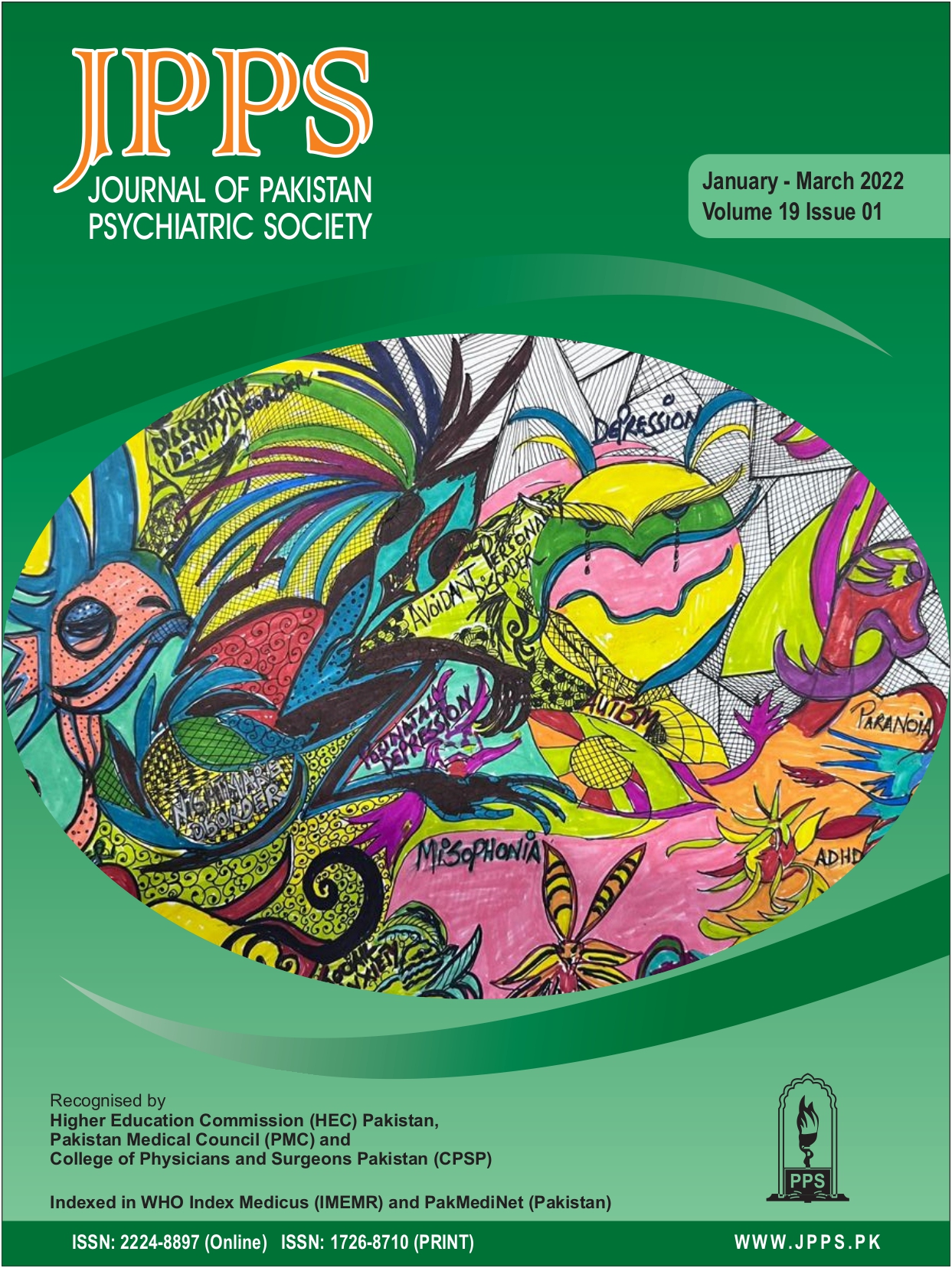Loneliness Scale for Institutionalized Older Adults: A Preliminary Finding
Abstract
Objective. From the time of Greek mythology to the current digital age, loneliness has been considered an integral part of human life. Such feelings of loneliness are more pronounced in older adults who have been living in old age institutions. For the purpose of assessing the phenomenon of loneliness, a culturally relevant tool was developed.
Design. Cross sectional Design
Place & duration of study. The data was collected during the time period of November 2019 – January 2020 from the Old age institutes of Lahore.
Patients & Methods. In the first phase of the study, 16 older adults were interviewed to generate a pool of 37 items reflecting the phenomenon of loneliness as experienced by them. All the responses were gathered and the vague items were discarded. The developed tool was then validated through experts for their significance and relevance to the target population. Further, the tool was administered on 100 older adults selected through purposive sampling within the age range of 65 to 90 years (M= 73.15; SD= 6.42). Depression, Anxiety and Stress Scale was also administered for concurrent validity.
Results. Exploratory factor analysis yielded three factor solution namely “Aloofness”, “Depressive Symptoms” and “Anxiety”. Results showed that the developed scale was highly consistent (α=.93). Results were further discussed in the light of cultural context.
Conclusion. This study has yielded a self-report measure of loneliness for institutionalized older adults with sound psychometric properties.
Downloads
Copyright © JPPS. Published by Pakistan Psychiatric Society
Licensing: This work is licensed under Creative Commons Attribution-NonCommercial 4.0 International License
Readers may “Share-copy and redistribute the material in any medium or format” and “Adapt-remix, transform, and build upon the material”. The readers must give appropriate credit to the source of the material and indicate if changes were made to the material. Readers may not use the material for commercial purposes. The readers may not apply legal terms or technological measures that legally restrict others from doing anything the license permits.






.png)









